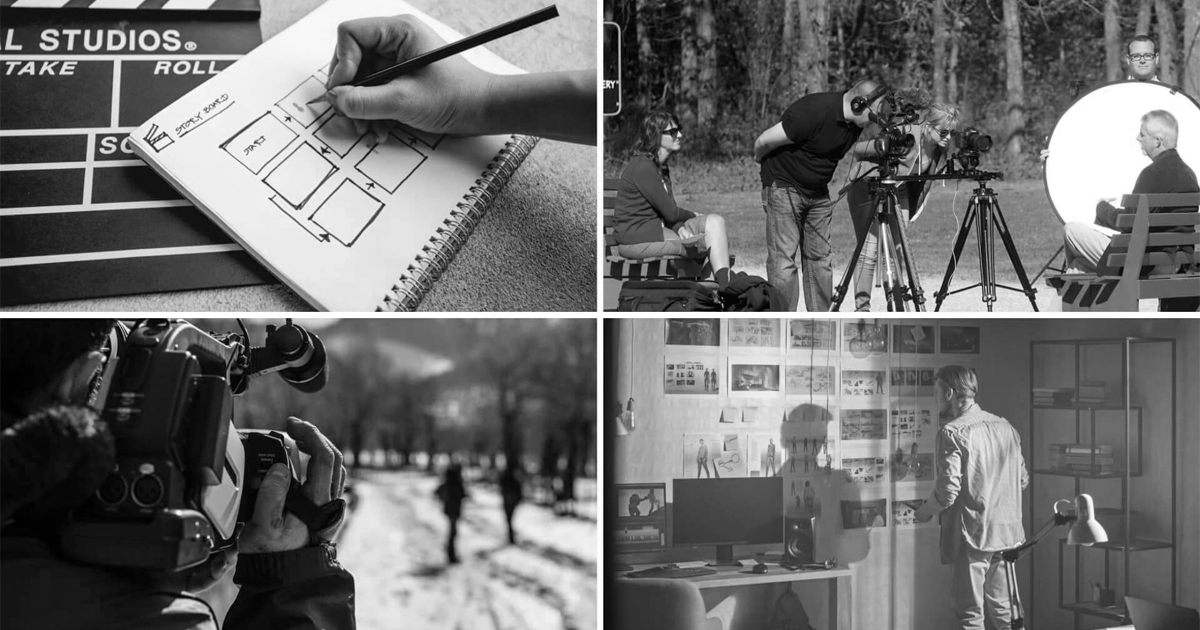Storyboarding is an essential process in the world of video production. It serves as a visual outline or blueprint that helps filmmakers, directors, and videographers plan out the shots, camera angles, and overall structure of a video before shooting begins. This meticulous planning process enables the production team to bring their creative visions to life and ensures that everyone involved is on the same page.
In India, where the film industry is thriving and producing a multitude of movies, web series, and advertisements, storyboarding has become an indispensable tool. It allows filmmakers to effectively communicate their ideas, set the tone and mood of the video, and streamline the production process. Let’s delve deeper into the art of storyboarding and understand its significance in the Indian video production industry.
The Concept of Storyboarding
Storyboarding involves visually translating a script or concept into a series of illustrations or images that represent key moments and scenes in a video. Each frame on a storyboard typically includes a sketch or depiction of the shot, along with accompanying descriptions, dialogues, and notes. This visual representation helps the production team visualize how the video will unfold and enables them to make informed decisions about camera movements, lighting, props, and set design.
Creating a Storyboard
The process of creating a storyboard begins with a thorough understanding of the script or concept. The director, along with the cinematographer and other key stakeholders, brainstorm ideas and discuss the desired look and feel of the video. They consider factors such as the target audience, message, and desired emotional impact.
Once the creative direction is established, the storyboard artist or director sketches out the key scenes and shots on paper or using digital software. These sketches are often simplified, focusing on the essential elements and compositions of each shot. Annotations and descriptions accompany each frame, providing additional context for the production team. The storyboard may also include notes on camera movements, transitions, special effects, and any other technical details.
Benefits of Storyboarding
Storyboarding offers numerous benefits in the video production process. Let’s explore some of the advantages that make it an invaluable tool for filmmakers in India:
- Visualisation: Storyboards transform abstract ideas into tangible visuals. They provide a clear representation of the director’s vision, making it easier for the entire team to visualize the final product. This shared understanding helps in effective collaboration and prevents misunderstandings during shooting.
- Planning and Organisation: Storyboards serve as a roadmap for the production team. By outlining the shots and sequences, they ensure that no crucial aspect of the video is overlooked. Storyboarding allows the team to plan for necessary resources, equipment, and locations, minimising last-minute surprises and delays.
- Time and Cost Efficiency: With a well-crafted storyboard, the production team can anticipate potential challenges and make necessary adjustments in advance. This proactive approach saves time and reduces wastage of resources, resulting in a more efficient and cost-effective production process.
- Creative Freedom: Storyboards provide a platform for experimenting with different ideas and visual styles. By visually exploring various compositions and camera angles, the team can refine their creative choices and ensure that the video aligns with the desired aesthetic.
- Effective Communication: Storyboards act as a universal language that bridges the gap between the director’s vision and the rest of the production team. They help in articulating ideas, discussing concepts, and conveying specific requirements to the cinematographer, art director, and other crew members. This shared understanding fosters a cohesive and collaborative work environment.
- Pre-visualisation and Feedback: Storyboards allow the team to pre-visualise the video, enabling them to identify potential issues or improvements before committing to shooting. This early stage feedback helps streamline the creative process and ensures that the final product aligns with the director’s vision.
- Marketing and Promotion: In addition to aiding production, storyboards can also be repurposed for marketing and promotional purposes. They can be transformed into teaser images, posters, or animatics that give potential viewers a glimpse into the visual style and storyline of the video. This helps generate buzz and excitement before the video’s release.
Summary
In conclusion, storyboarding plays a vital role in the Indian video production industry. It serves as a visual blueprint that allows filmmakers and directors to plan out the shots, camera angles, and overall structure of a video before shooting commences. By providing a clear visual representation of the director’s vision, storyboards facilitate effective communication, streamline the production process, and ensure that the final video aligns with the desired creative direction. As India continues to produce an array of compelling videos, storyboarding will remain an indispensable tool in bringing ideas to life on the screen.
